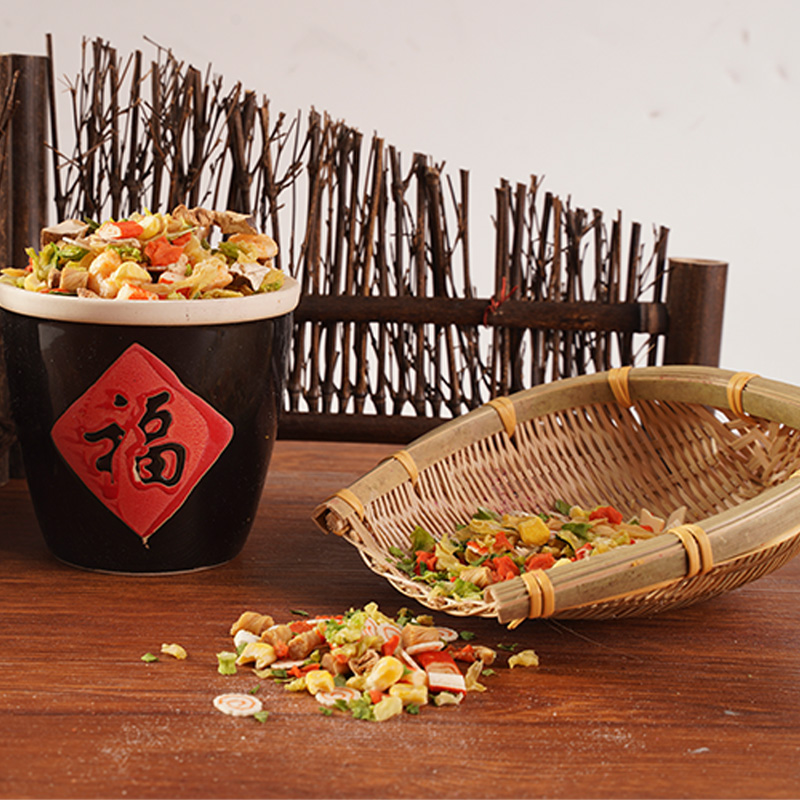Do Dehydrated Vegetables Save Space in My Pantry?
For individuals seeking to optimize kitchen storage, maximize food longevity, or prepare for emergencies, the question of pantry efficiency is paramount. Dehydrated vegetables are frequently cited as a space-saving solution. This analysis examines the evidence regarding their impact on pantry footprint compared to fresh, frozen, or canned alternatives.
1. The Core Mechanism: Water Removal
The primary space-saving advantage of dehydrated vegetables stems from the removal of water content. Fresh vegetables consist largely of water (typically 80-95% by weight). The dehydration process significantly reduces both weight and volume. Industry standards indicate dehydration can remove up to 90-95% of a vegetable's water weight. This drastic reduction translates directly into physical compactness.
2. Quantifying the Space Savings
- Weight Reduction: Dehydrated vegetables weigh a fraction of their fresh counterparts. A pound of fresh carrots dehydrates down to roughly 1.5-2 ounces. This weight reduction alone simplifies storage and transportation.
- Volume Reduction: The removal of water collapses cellular structure, significantly shrinking the physical bulk. For example:
- A single #10 can (approximately 13 cups volume) of dehydrated diced carrots can yield the equivalent of several pounds of fresh carrots when rehydrated.
- A quart-sized jar packed with dehydrated green beans holds the vegetable matter equivalent to multiple pounds of fresh beans.
- Dehydrated vegetables like spinach or kale, often found in flake or powder form, are exceptionally dense and require minimal shelf space for the nutritional equivalent of large volumes of fresh leaves.
3. Storage Formats and Efficiency
Dehydrated vegetables offer flexible storage options contributing to space efficiency:
- Bulk Storage: Large quantities can be stored compactly in airtight containers like food-grade buckets, Mylar bags with oxygen absorbers, or vacuum-sealed jars.
- Modular Storage: Smaller containers or resealable bags allow for organizing specific vegetables efficiently within pantry shelves or drawers.
- Stackability: Their non-perishable, solid nature at room temperature allows containers to be safely stacked, optimizing vertical space.
4. Comparison to Alternatives
- Fresh: Requires significant refrigerator space (for most varieties) and has a short shelf life, necessitating frequent purchases and occupying space continuously.
- Frozen: Requires dedicated freezer space, which is often at a premium compared to shelf storage. Frozen vegetables also contain water ice crystals, adding bulk.
- Canned: While shelf-stable, cans are rigid and contain significant water weight and volume. The space occupied by the liquid and the can itself is less efficient than the pure, dense vegetable matter in dehydrated form. Dehydrated equivalents typically offer more servings per cubic inch of storage space.
5. Important Considerations for Pantry Planning
While the space-saving benefits are clear, practical usage involves factors beyond mere storage footprint:
- Rehydration Requirement: Dehydrated vegetables must be rehydrated before use in most cooked dishes. This adds preparation time and requires access to water.
- Texture Changes: Dehydration alters texture. Rehydrated vegetables rarely regain the exact crispness of fresh produce, being better suited for soups, stews, sauces, and casseroles.
- Nutritional Profile: Dehydration preserves most vitamins and minerals, though some heat-sensitive nutrients like vitamin C may be reduced during processing. They remain a nutritionally valuable, shelf-stable option.
- Shelf Life: Properly dehydrated and stored (cool, dark, dry, airtight, oxygen-free) vegetables can last 5-10 years or more, far exceeding fresh, frozen, or even canned goods (typically 1-5 years). This longevity enhances pantry efficiency by reducing waste and turnover.
- Initial Cost & Preparation: Purchasing commercial dehydrators or pre-dehydrated vegetables involves an initial investment. Home dehydration requires time and energy.
Evidence strongly supports dehydrated vegetables as a highly effective method for conserving pantry space. The removal of water dramatically reduces both weight and volume, allowing significantly more vegetable servings to be stored in a given area compared to fresh, frozen, or canned equivalents. Their shelf-stable nature, flexible packaging options, and long shelf life further contribute to pantry efficiency by minimizing waste and allowing strategic long-term storage. However, the requirement for rehydration and altered texture are practical factors users must incorporate into their meal planning. For those prioritizing space optimization and long-term food storage without refrigeration, dehydrated vegetables represent a scientifically sound and efficient solution.
News Category
- Company News(1)
- Industry News(68)



 English
English русский
русский 日本語
日本語 한국어
한국어 中文简体
中文简体












